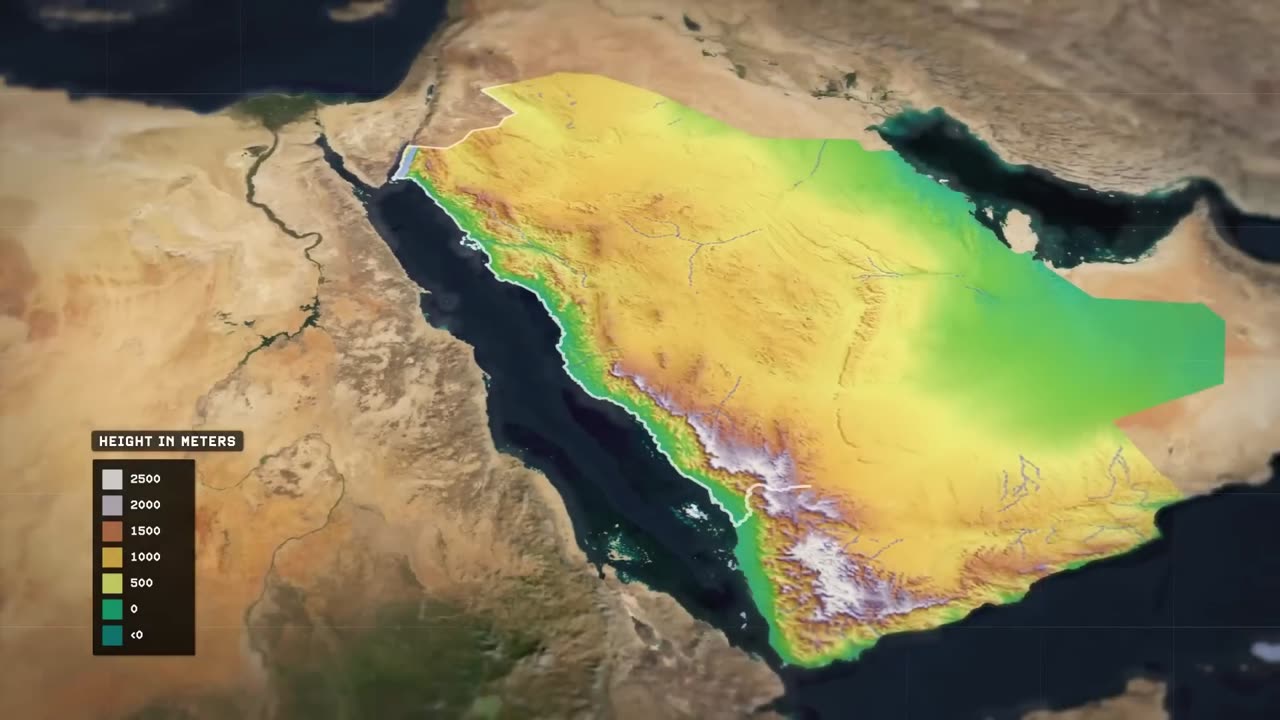Premium Only Content

Why 82% of Saudi Arabians Just Live in These Lines
Title: Understanding the Phenomenon: Why 82% of Saudi Arabians Choose to Reside Within These Borders
In recent years, a striking demographic trend has been observed in Saudi Arabia, capturing the attention of researchers, policymakers, and curious observers alike. The phenomenon in question revolves around the fact that a staggering 82% of Saudi Arabians have chosen to call home within specific geographical lines, raising important questions about the underlying factors driving this concentration of the population.
One key aspect contributing to this unique demographic distribution is the concept of urbanization. Saudi Arabia, a vast and diverse country characterized by a wide range of climates and landscapes, is experiencing rapid urban growth. Major cities like Riyadh, Jeddah, and Dammam have transformed into bustling metropolises, offering a plethora of opportunities in terms of education, employment, and modern amenities. As a result, an increasing number of Saudi Arabians are gravitating toward these urban centers in search of better prospects and an enhanced quality of life.
Economic factors play a pivotal role in the clustering of the population. The Saudi government has initiated ambitious economic reforms and diversification efforts, with a particular focus on sectors such as technology, tourism, and entertainment. These initiatives have attracted significant investments and created jobs, which in turn have drawn people to the regions where these economic activities are concentrated. This economic magnetism is especially pronounced in the urban centers and coastal areas, further driving population growth within these boundaries.
Cultural and social dynamics also contribute to the phenomenon. Saudi Arabia is a country deeply rooted in tradition and familial ties. Many individuals prefer to reside in close proximity to their extended families, and this cultural inclination often leads to a concentration of populations in certain regions. Additionally, the allure of vibrant communities, cultural events, and social networks present in urban areas can be a compelling factor for individuals and families to choose to live within these lines.
Infrastructure development and accessibility are vital components as well. The government has been actively investing in the development of infrastructure, including transportation networks, healthcare facilities, and educational institutions. These amenities are more readily available and of higher quality in urban and developed regions, making them attractive destinations for Saudi residents.
Furthermore, environmental considerations come into play. The desert climate of much of Saudi Arabia makes living in specific regions more practical due to factors like access to water resources and temperature moderation. Coastal areas, for instance, offer a milder climate and access to the Red Sea, making them desirable locations for habitation.
In conclusion, the concentration of 82% of Saudi Arabians within certain geographic lines is a multifaceted phenomenon driven by economic opportunities, cultural dynamics, infrastructure development, and environmental considerations. It reflects the evolving landscape of Saudi society as it navigates a path of modernization and diversification, while still holding onto its deeply ingrained traditions and familial ties. Understanding this trend is crucial for policymakers and researchers as they seek to address the challenges and harness the potential of this dynamic and rapidly evolving nation.
-
 1:02:51
1:02:51
PMG
17 hours ago $0.05 earnedRFK, Immigration & DeepSeek
506 -
 LIVE
LIVE
Scammer Payback
1 hour agoCalling Scammers Live
440 watching -
 1:33:14
1:33:14
Simply Bitcoin
3 hours ago $1.89 earnedMicroStrategy PROVES You're Not BULLISH Enough On Bitcoin| EP 1172
45.2K -
 1:58:05
1:58:05
The Charlie Kirk Show
3 hours agoGetting Them All Confirmed + DEI in the Air | Smith, Means | 1.31.2025
96.1K26 -
 13:19
13:19
Misha Petrov
2 hours agoDISGUSTING! TikTok Leftists MOCK RFK Jr.’s Disorder While He EXPOSES Big Pharma
24.5K17 -
 1:01:20
1:01:20
The Dan Bongino Show
6 hours agoThe Tragic Consequences Of DEI (Ep. 2413) - 01/31/2025
645K1.13K -
 1:03:38
1:03:38
The Rubin Report
5 hours agoTulsi Gabbard Catches Her Critics Off Guard with Her Blistering Reaction to False Smears
120K102 -
 1:01:33
1:01:33
Dr. Eric Berg
4 days agoThe Dr. Berg Show LIVE January 31, 2025
71.9K3 -
 1:40:05
1:40:05
Benny Johnson
4 hours agoSHOCK: New Plane Crash Video REVEALS Horrifying Truth About Tragedy | 'This was Preventable!'
113K141 -
 2:03:20
2:03:20
LFA TV
19 hours agoTIME FOR TARIFFS! | LIVE FROM AMERICA 1.31.25 11am
61.8K31